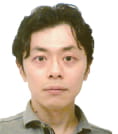- JST Home
- /
- Strategic Basic Research Programs
- /
 PRESTO
PRESTO- /
- project/
- Optical control of biological functions for the elucidation of biological systems/
- [Optical Control] Year Started : 2018
[Optical Control] Year Started : 2018
Satoshi Okada
Magnetic nanotools for observing and modulating brain functions by application of magnetic field
Researcher
Satoshi Okada

Associate Professor
Institute of Innovative Research
Tokyo Institute of Technology
Outline
Optical techniques using ultraviolet-visible light are useful for molecularly specific analysis but the applicable field is localized. In order to resolve the problem, I propose a combination of magnetic fields penetrating into tissue and magnetic nanotools expressing functions in a signaling pathway dependent manner. The goal of the research is to establish a standard technique using magnetic fields capable of observing and modulating wide and deep regions of brain activity at the molecular level without genetic engineering.
Takuma Kitanishi
Large-scale opto-electrophysiology to monitor neural information flow in behaving rodents
Researcher
Takuma Kitanishi

Associate Professor
Graduate School of Arts and Sciences
The University of Tokyo
Outline
Brain function is supported by information transmission among a large number of neurons. However, monitoring such information transmission in behaving animals has been technically difficult. By combining optogenetics and extracellular electrophysiological recordings, I develop a novel method to comprehensively monitor intercellular/interareal information transmission in freely-behaving rodents. I apply this method to the hippocampal formation and reveal the network mechanisms of generating/distributing mnemonic information.
Tatsuo Sato
Optogenetic manipulation and imaging of neural dendrites based on a novel gene delivery approach
Researcher
Tatsuo Sato

Lab head
Biomedicine Discovery Institute
Monash University(Australia)
Outline
In cortical processing, a functional unit is considered to be a neuron. However, a single neuron has elaborate subcellular structures, including dendrites which can amplify weak input signals. This project aims at clarifying the computational power of dendrites by combining dendritic optogenetics and imaging in a single neuron. The project will demonstrate that dendrites can achieve non-linear visual processing which is traditionally thought to result from circuit computation, leading to new insight into dendrites as a functional subunit in cortical computation.
Hiromasa Shikata
Optogenetic control of kinase activity to elucidate the cell elongation mechanism in plants
Researcher
Hiromasa Shikata

Assistant Professor
National Institute for Basic Biology
National Institutes of Natural Sciences
Outline
Protein kinases are key components in cell signaling to regulate diverse and crucial cell functions. To elucidate the biological function of kinases especially in eukaryotes, analyzing tools at the subcellular level have been desired. In this project, kinase activity will be engineered as controlled by light stimuli. The optogenetically modified kinases should enable us to modulate the cell function at high spatio-temporal resolution and could give us more insight into how protein kinases act in eukaryotic cells. This project first focuses on one family of plant protein kinases important for plant cell growth as a model to control kinase activity optogenetically, and it will be developed as a general tool for kinases.
Hiroto Sekiguchi
Innovation of invasive LED devices for biological optical stimulation
Researcher
Hiroto Sekiguchi

Associate Professor
Graduate School of Engineering
Toyohashi University of Technology
Outline
The invasive LED devices for optogenetics have received much attention from the viewpoint of wireless power supply and multiple optical stimulation. In this study, to clarify neural network between each layer and each region of the brain, the development of a novel invasive LED probe which enables minimal invasion, local and multipoint stimulation, and multi-wavelength stimulation is challenged.
Akiyuki Taruno
Elucidation of the neural basis of taste recognition and appetite using light-induced “virtual tastes”
Researcher
Akiyuki Taruno

Professor
Graduate School of Medical Science
Kyoto Prefectural University of Medicine
Outline
The aim of this study is to unfold the relation between peripheral sensory inputs and central neural circuits that defines taste recognition and appetite, and provide strategies for prevention of lifestyle diseases. To this end, “virtual taste sensation” generated by optogenetic control of the activity of specific taste cell subtypes will be utilized to analyze effects of specific taste pathways on neural activity and taste behavior.
Tomomi Tsunematsu
Unravel the mystery of REM sleep from glial activities
Researcher
Tomomi Tsunematsu

Assistant Professor
Graduate School of Life Sciences
Tohoku University
Outline
Mammalian sleep can be classified into two categories, i.e., rapid eye movement (REM) sleep and non-rapid eye movement (NREM) sleep. This research aims to understand the mechanisms of the glial involvement in regulating physiology of REM sleep. Particularly, taking full advantage of optical technological advancement, I am going to investigate the relationship between cerebral blood flow, energy homeostasis and REM sleep, with eventual goal of elucidating mechanisms of dream.
Takashi Nagata
Restorataion of visual responses with a dark-active, light-inactivated opsin
Researcher
Takashi Nagata

Research Associate
The Institute for Solid State Physics
The University of Tokyo
Outline
Animal opsins have been used as optogenetic tools that drive intracellular signaling cascades upon light activation. Recently, we generated a new type of animal opsin-based optogenetic tool that continuously drives a signaling cascade in the dark and is inactivated by light. This project aims at developing optimized light-inactivated opsin-based tools for restoring visual responses of blind mice. In addition, the research would lead to a new optogenetic technique utilizing light-inactivated tools.
Arisa Hirano (Tsubota)
Functional analysis of a potential blue-light receptor, mammalian Cryptochrome, and its optogenetics applications.
Researcher
Arisa Hirano (Tsubota)

Assistant Professor
Faculty of Medicine
University of Tsukuba
Outline
To develop an innovative optogenetics tool, it is quite important to understand the detailed mechanisms underlying physiological photo reception. In this study, we aim to demonstrate the novel function of mammalian Cryptochromes (CRY1/2), which has been considered as transcriptional factors in the circadian clock system due to their strong behavioral phenotype in knockout mice. Biochemical analysis of molecular dynamics of Cryptochrome triggered by light will provide new insight into mechanism of the mammalian non-visual photoreception and will also give opportunities to develop technics modulating biological process by light.
Taichi Furukawa
Multicolor 3D optical control method for cells in deep region using rare-earth doped phosphors.
Researcher
Taichi Furukawa

Assistant Professor
Faculty of Engineering
Yokohama National University
Outline
In this study, I intend to develop a multicolor 3D optical control method for cells in deep region using rare-earth doped phosphors and near-infrared light irradiation. This method will realize not only optical control of multiple light-sensitive proteins but also three-dimensional optical control at single cell scale in deep region of biological samples.
Yoshito Masamizu
Development of techniques to create novel neural circuits with optogenetics
Researcher
Yoshito Masamizu

Professor
Graduate School of Brain Science
Doshisha University
Outline
I aim to develop techniques to create novel neural circuits by combining optogenetics with transplanted neuronal spheroids or fibers. At first, I apply these techniques to rodents, then to non-human primates. These techniques would be useful tools to recover the function of damaged neural circuits.













